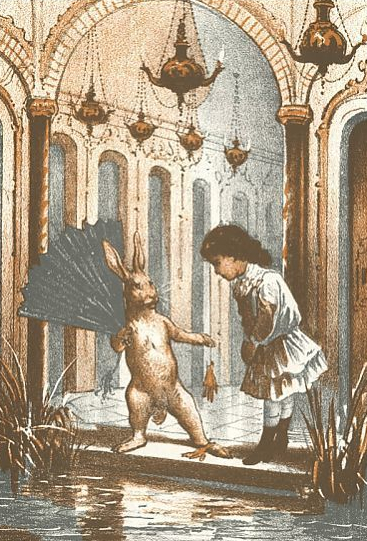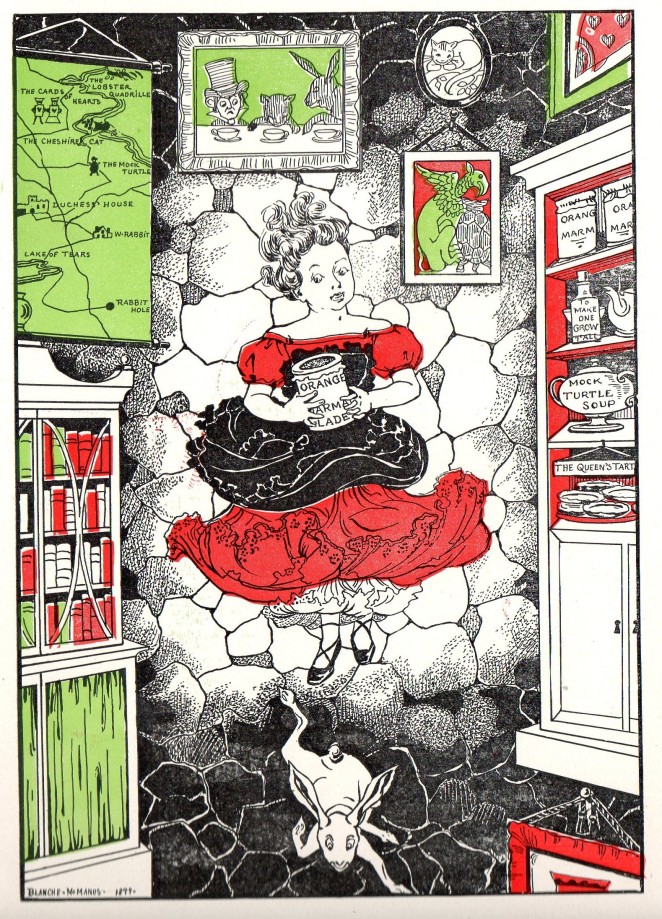Born in Brooklyn (1870), John Watson Davis started his art education in Paris, after moving to Europe with his family at the age of ten. His father was also a book illustrator. His long career as illustrator is recognised, in addition to his religious commissions, mostly by his drawings for Edgar Allan Poe novels and the Zane Grey tales of Sherlock Holmes.
J. Watson Davis drawing of Alice Adventures in Wonderland is hard to date with precision. There are two different editions, both including also Alice Through the Looking-Glass. The blue edition displays 8 colour plates, the red one only 4. Interestingly enough, these plates are different between books, despite both books being published by A.L. Burts (New York). If the blue book was published in 1901, and the red one in 1905, is really hard to confirm, since none of them displays a printing date. What seems to be certain, is that this illustrated Alice was commercialized before 1907, this is, prior to the original Tenniel rights ceasing.
A. L. BURT , the publisher, was one of the first to use color, albeit only using orange (or light red). In both editions, J. Watson Davis drawings are very coherent, showing all of them the same halftone Alice, with orange details and a pale skin color.
















